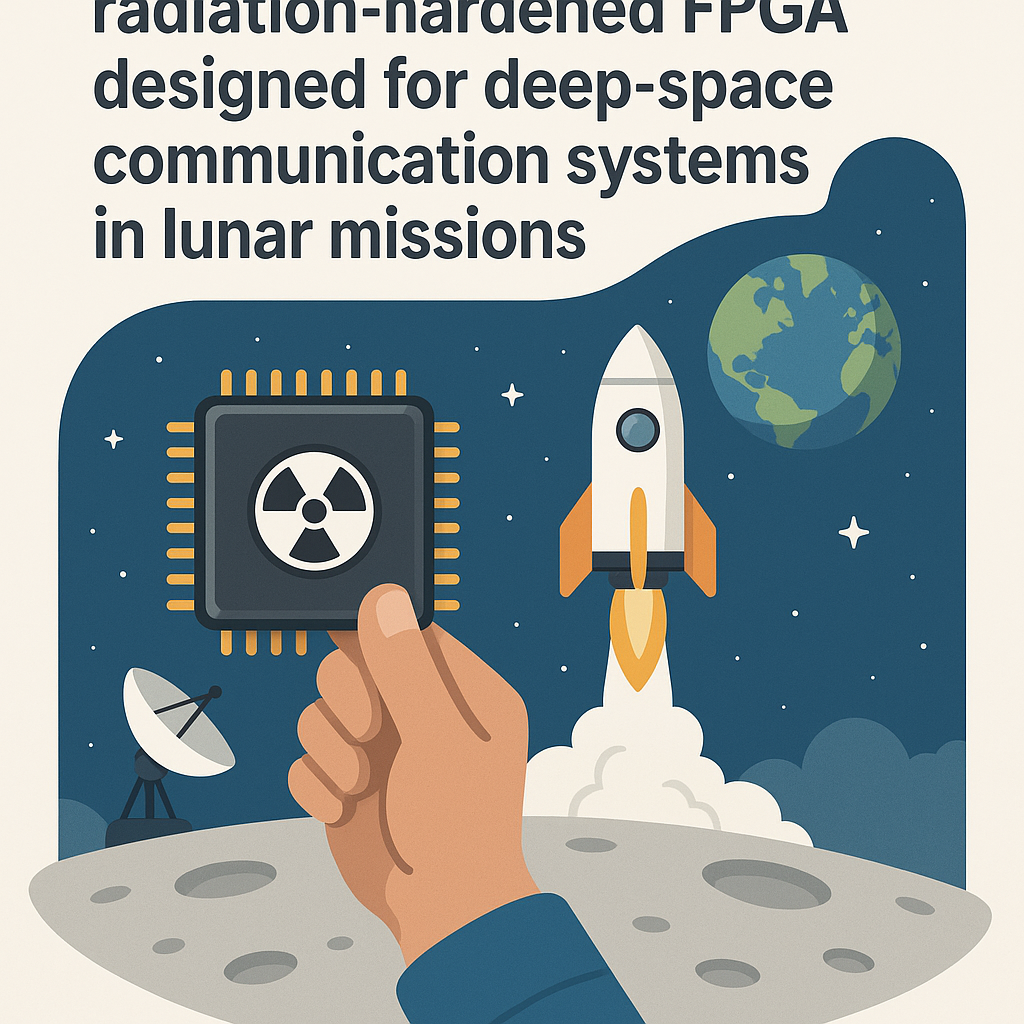Introduction
The launch of the first radiation-hardened Field Programmable Gate Array (FPGA) designed specifically for deep-space communication systems marks a significant milestone in space exploration technology. As lunar missions become more ambitious, the need for reliable and robust communication systems is paramount. This innovative FPGA promises to enhance the capabilities of spacecraft operating in the harsh conditions of space, paving the way for more complex and deeper explorations of the lunar surface and beyond.
What is an FPGA?
A Field Programmable Gate Array (FPGA) is an integrated circuit that can be configured by a customer or designer after manufacturing. This flexibility allows engineers to customize the hardware to meet specific needs, especially in dynamic environments like space. FPGAs are widely used in various applications, including telecommunications, automotive, and aerospace, due to their adaptability and efficiency.
The Need for Radiation-Hardened Technology
Space environments present unique challenges, primarily due to radiation exposure, which can cause significant damage to electronic components. Traditional electronics may fail when exposed to high levels of radiation found in space, leading to system malfunctions or failures. Thus, radiation-hardened technology is essential for ensuring the longevity and reliability of electronic systems in deep-space missions.
Key Benefits of Radiation-Hardened FPGAs
- Enhanced Reliability: Designed to withstand high radiation levels, ensuring that communication systems remain operational during long missions.
- Reduced Risk of Failure: Minimizes the chances of system failures caused by radiation-induced errors.
- Adaptability: Can be reconfigured for different mission needs, providing flexibility in design and operation.
- Cost-Effectiveness: Reduces the need for multiple hardware components, lowering overall mission costs.
Applications in Lunar Missions
The introduction of radiation-hardened FPGAs is particularly relevant for upcoming lunar missions. As agencies like NASA and private space companies prepare to return humans to the Moon, they require advanced communication systems to handle data transfer, navigation, and control tasks.
Specific Applications Include:
- Communication Networks: Supporting high-bandwidth communication between lunar landers, rovers, and orbiters.
- Data Processing: Processing large volumes of scientific data collected during missions.
- Navigation Systems: Assisting in the accurate navigation of spacecraft on the lunar surface.
- Autonomous Operations: Enabling autonomous decision-making in response to environmental changes.
Technological Advancements
The development of this radiation-hardened FPGA incorporates cutting-edge technology aimed at maximizing performance while minimizing susceptibility to radiation effects. Some of the advancements include:
- Improved Error Correction: Advanced algorithms that can detect and correct errors caused by radiation, ensuring data integrity.
- High Processing Power: Increased logic density and processing capabilities to handle complex tasks efficiently.
- Energy Efficiency: Designed to operate with lower power consumption, which is critical for spacecraft that rely on limited energy sources.
Collaboration and Development
The launch of this FPGA was made possible through collaboration between aerospace engineers, scientists, and industry leaders. This synergy has resulted in a product that not only meets the needs of current missions but is also adaptable for future explorations.
Key Players Involved:
- Aerospace Agencies: Organizations like NASA are at the forefront, pushing for innovations that support their mission objectives.
- Private Industry Collaborators: Partnerships with technology companies facilitate the integration of advanced design techniques and manufacturing processes.
- Research Institutions: Academic collaborations help drive theoretical advancements into practical applications.
Challenges Ahead
Despite the promising launch of this radiation-hardened FPGA, several challenges remain. These include:
- Integration with Existing Systems: Ensuring compatibility with legacy systems can be complex and time-consuming.
- Cost Considerations: While more cost-effective than traditional methods, the development and certification of radiation-hardened components still involve significant investment.
- Long-Term Testing: Continuous evaluation and testing in simulated space environments are necessary to validate reliability and performance.
Conclusion
The launch of the first radiation-hardened FPGA designed for deep-space communication systems represents a pivotal advancement in spacecraft technology. As we prepare for new lunar missions and beyond, this innovation will play a crucial role in ensuring that our communication systems are resilient, reliable, and capable of meeting the demands of future explorations. By addressing the challenges of radiation exposure and enhancing the adaptability of communication technologies, we are one step closer to unlocking the mysteries of the universe.



